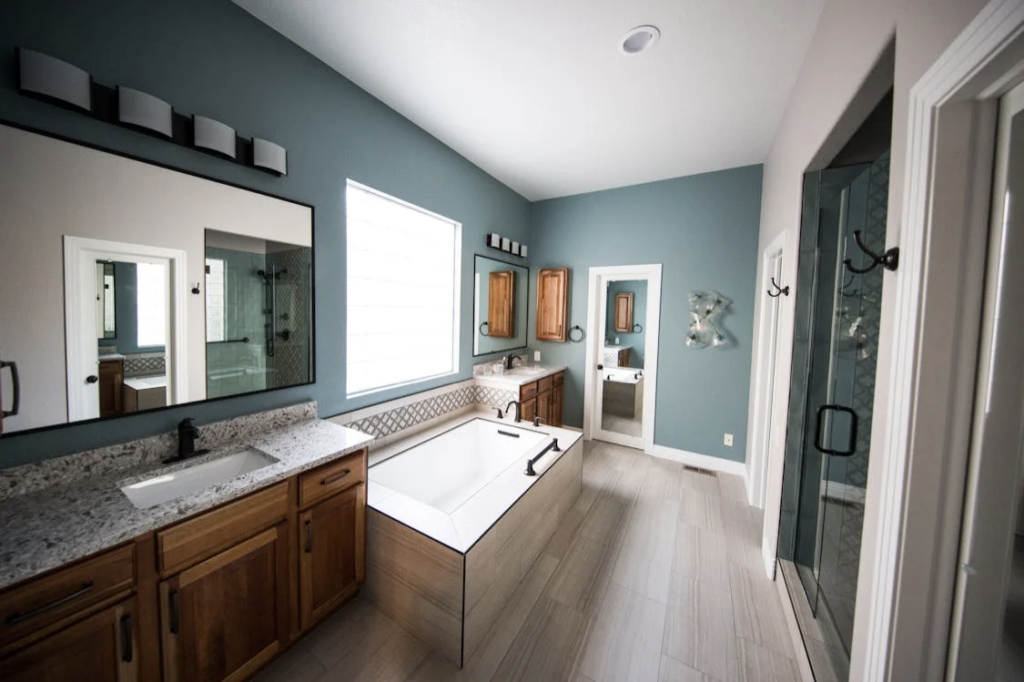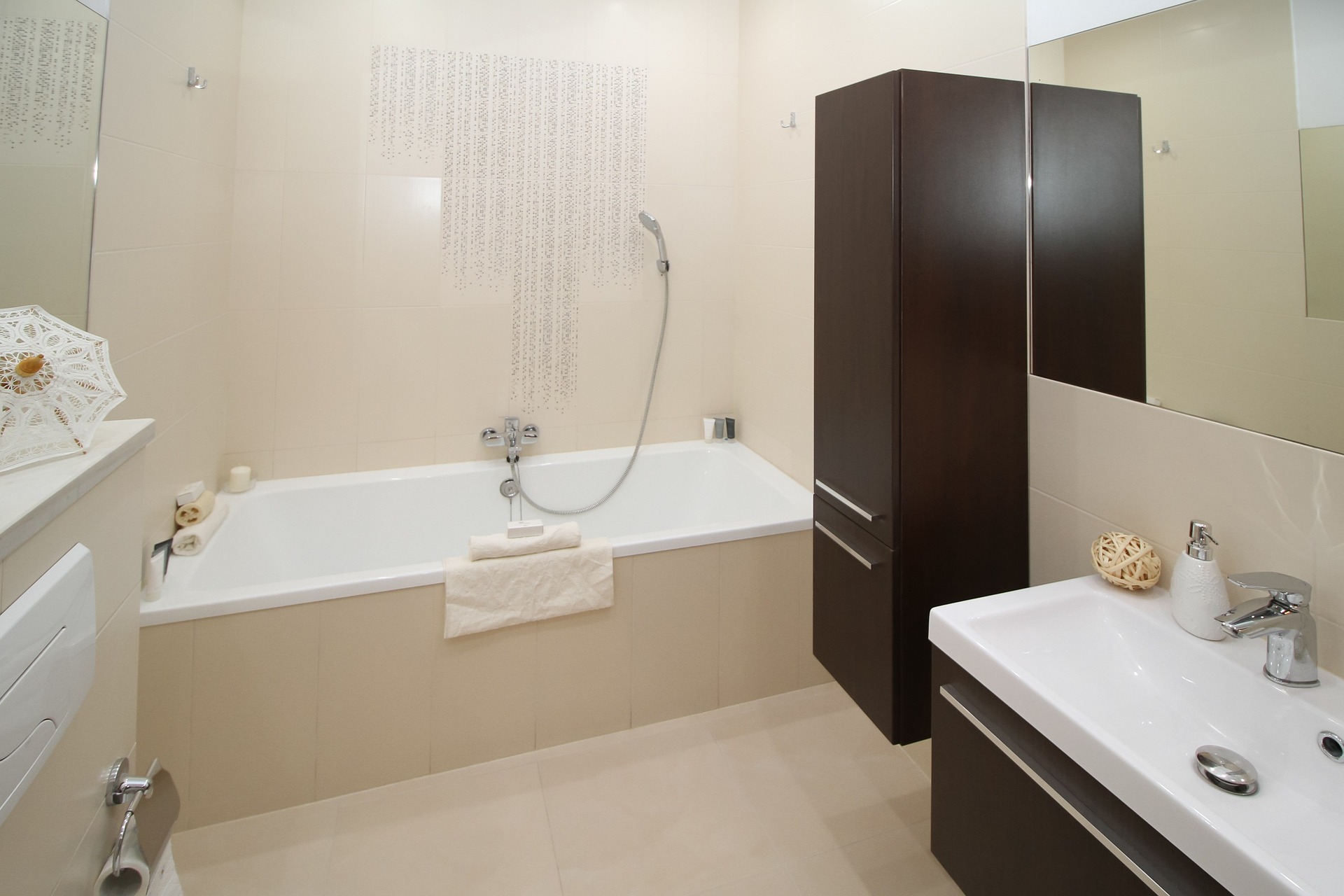Last Updated on April 10, 2024
Designing a bathroom that caters to older adults is not just about adding a few safety features; it’s about creating a space that supports independence, ensures safety, and provides comfort. As we age, our needs in a home environment change, and the bathroom, a place of privacy and personal care, becomes a critical area to consider. An age-friendly bathroom design can significantly enhance the quality of life for older adults, making daily routines easier and safer. This article explores essential considerations and practical tips for designing a bathroom that meets the needs of older adults, ensuring they can use their space with confidence and ease.

Start with Safety
The cornerstone of an age-friendly bathroom is safety. Slips and falls in the bathroom are a common concern, and preventing these accidents is paramount. Incorporating grab bars in the shower, beside the toilet, and in other strategic areas provides stability and support. Additionally, choosing anti-slip flooring can drastically reduce the risk of falls. These safety features are fundamental in creating a bathroom environment where older adults feel secure.
Prioritize Accessibility
Making the bathroom easy to use is crucial for helping older adults stay independent. This involves changing the usual bathroom setup to remove any obstacles. Installing walk-in showers without any steps and toilets that are a bit higher can help. It’s also smart to think about how high or where counters and sinks are placed, especially for anyone who might need to sit down to use them.
Professional Help and Resources
Tackling a bathroom remodel or redesign to make it more age-friendly can be a daunting task. That’s why consulting with professionals, such as those specializing in aging-in-place renovations, can be invaluable. They can offer personalized advice, recommend suitable products, and suggest modifications tailored to individual needs.
To find the best people for the job, look up bathroom remodeling near me online. You can then reach out to local professionals for quotes and consultations. This allows you to compare services, prices, and expertise to make an informed decision that best suits your needs.
Adequate Lighting
Good lighting is essential in a bathroom, especially for older adults who may have vision impairments. Bright, evenly distributed light helps prevent accidents and makes personal care tasks easier. Installing LED lights that provide clear, non-glare illumination can make all the difference. Consider adding motion-sensor lights for convenience and safety during nighttime visits.
Slip-resistant Flooring
Flooring choices significantly impact the safety of a bathroom. Slip-resistant options are crucial to prevent falls. Materials such as textured tile or vinyl designed for wet environments offer grip even when wet. These flooring options come in various styles, ensuring that safety does not compromise the bathroom’s aesthetic appeal.
Easy-to-Use Fixtures
The usability of fixtures like faucets, showerheads, and toilets is another critical consideration. Lever handles, touchless faucets, and thermostatic shower valves can help older adults maintain independence and use the bathroom with ease. These fixtures are designed to be easy to operate, even for those with limited mobility or strength.
Comfortable Access to Storage
Ensuring that storage is easily reachable and conveniently located is vital for older adults. Placing cabinets, shelves, and medicine cabinets at a height that does not require bending or stretching can make a significant difference in usability and safety. Consider pull-out shelves and drawers, which allow easy access to items without the need for reaching into the back of cabinets. These thoughtful storage solutions can make daily routines smoother and prevent strain or injury.
Shower and Bath Modifications
Modifying showers and baths to accommodate the needs of older adults can greatly enhance their bathing experience. Walk-in tubs eliminate the need to step over a high threshold, reducing the risk of falls, while showers with built-in benches and hand-held showerheads provide flexibility and comfort. Non-slip mats inside the shower or tub are also essential, offering additional stability and peace of mind during use.
Emergency Response
An often overlooked but crucial aspect of bathroom design for older adults is the integration of an emergency response system. Installing a waterproof emergency button or pull cord within reach can provide a lifeline in the event of a fall or sudden illness. This feature ensures that help can be summoned quickly, even in a compromised situation, offering an extra layer of security to the bathroom setup.
Temperature Control
Managing water temperature is critical to prevent burns and ensure a safe bathing experience. Anti-scald devices on faucets and showerheads automatically adjust the water temperature, preventing it from reaching dangerously high levels. These devices are particularly important in households with older adults, as they may have reduced sensitivity to temperature changes and are at a higher risk for burns.
Supportive Seating
Incorporating seating into the bathroom design not only enhances comfort but also increases safety. A built-in bench in the shower or a sturdy, water-resistant chair offers a secure place to sit while bathing or showering. Additionally, seating at the vanity allows for comfortable grooming activities, especially for those who may find standing for extended periods challenging.
Color and Contrast
Using contrasting colors to differentiate various elements of the bathroom can greatly assist those with visual impairments. Designing with distinct color contrasts between the floor, walls, and fixtures can help delineate spaces and make navigation easier. For example, a toilet seat that contrasts with the color of the floor or walls is easier to see, reducing the risk of falls.
Conclusion
Designing a bathroom for older adults is more than a matter of practicality; it’s about creating a space that respects their independence and dignity. By incorporating safety features, ensuring accessibility, and focusing on comfort, it’s possible to design a bathroom that not only meets the physical needs of older adults but also supports their well-being. The thoughtful integration of features like easy-to-use fixtures, adequate lighting, and emergency response systems can transform a bathroom into a safe, comfortable, and supportive space. As we consider the needs of older adults in bathroom design, we contribute to a living environment that values and uplifts them, ensuring they can enjoy their daily routines with confidence and ease.





